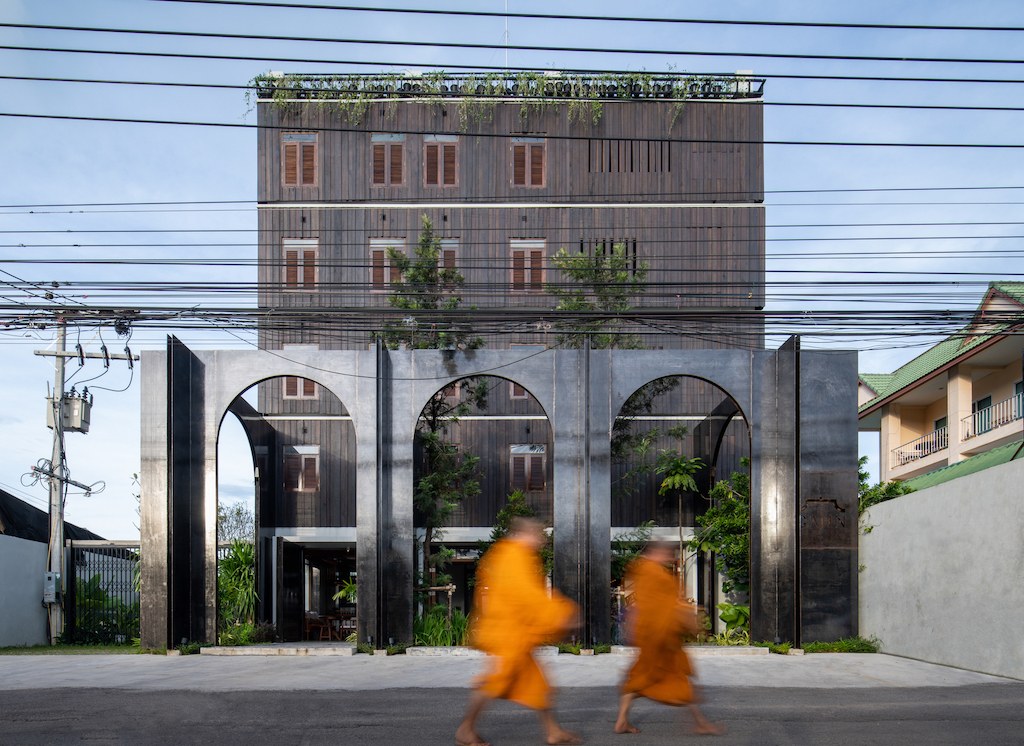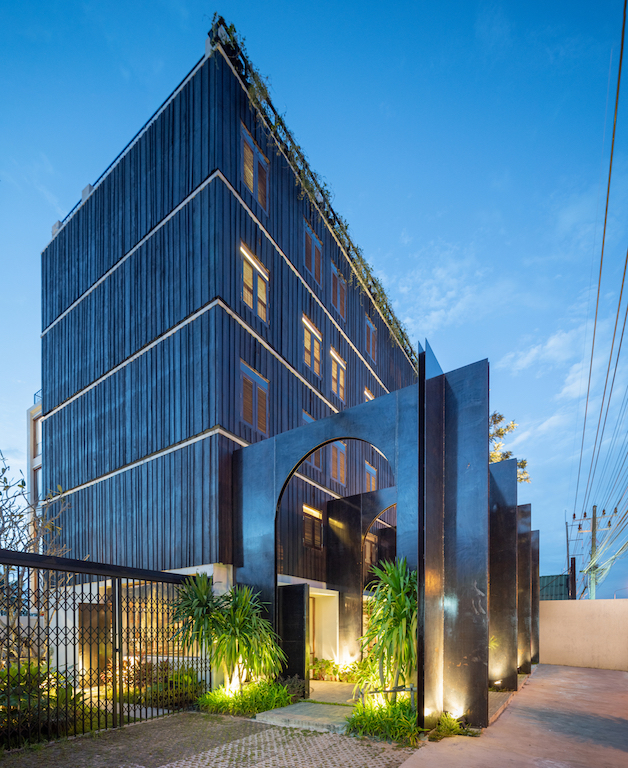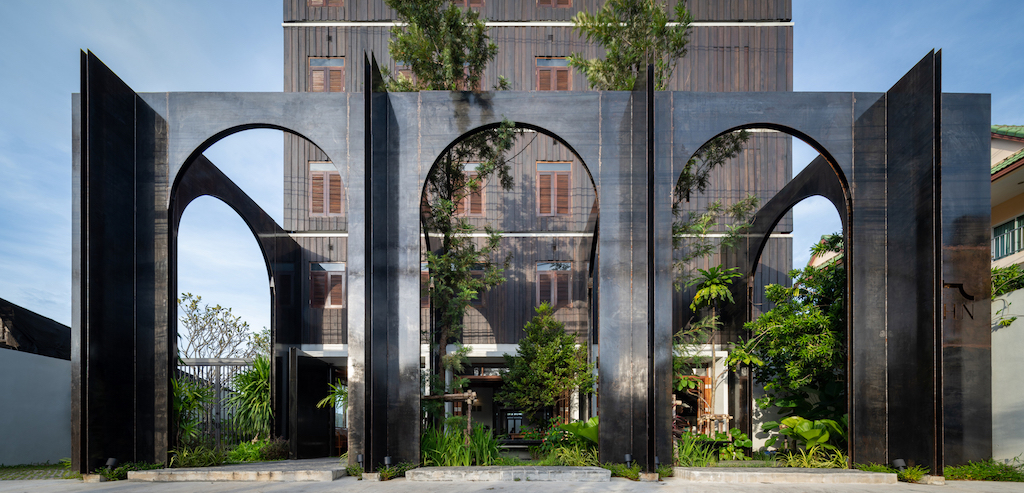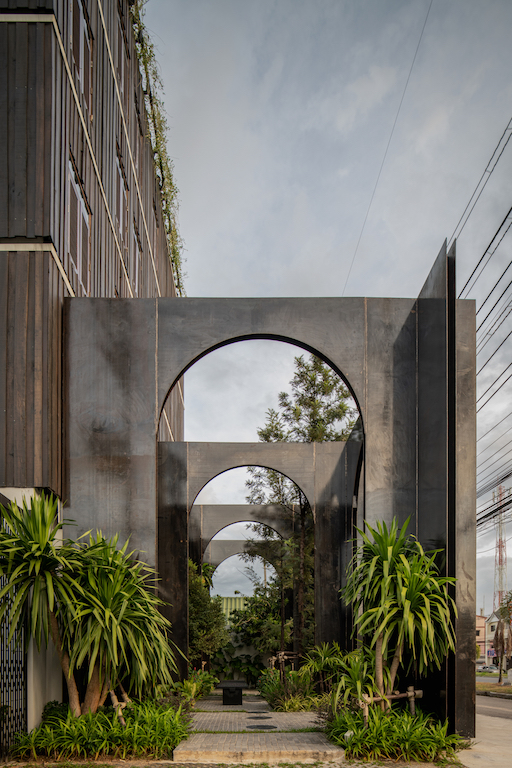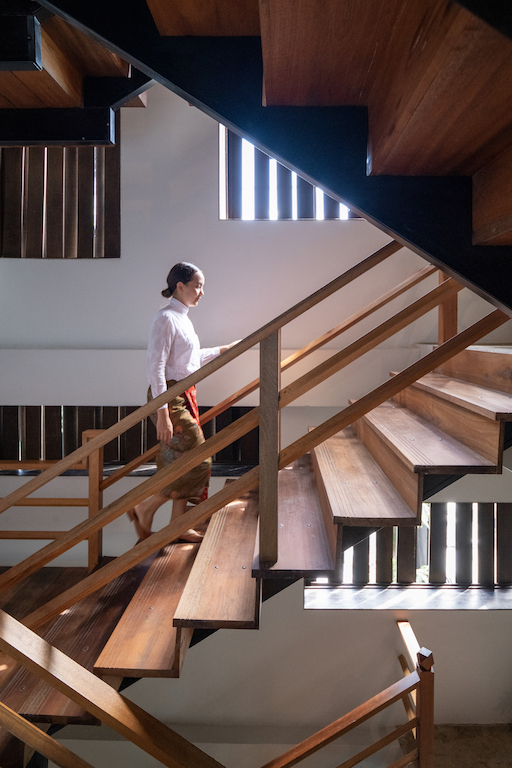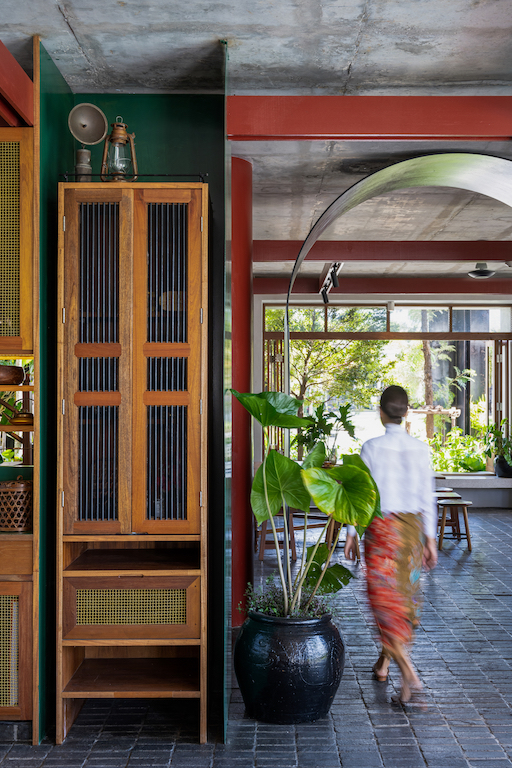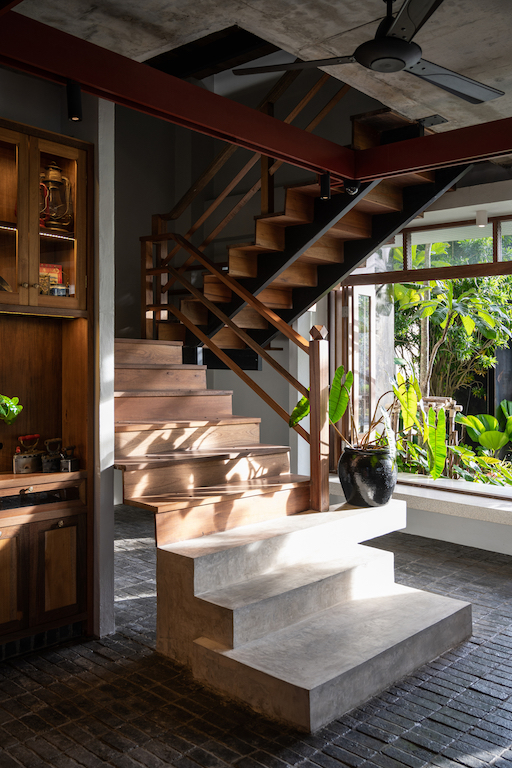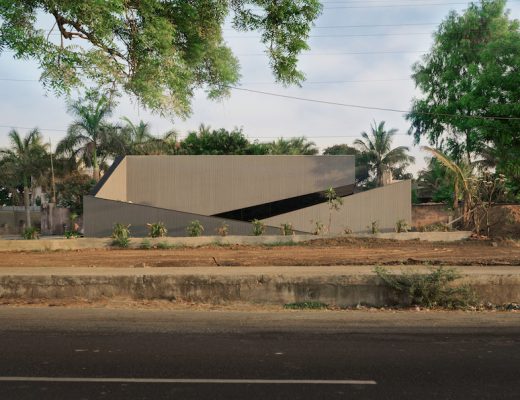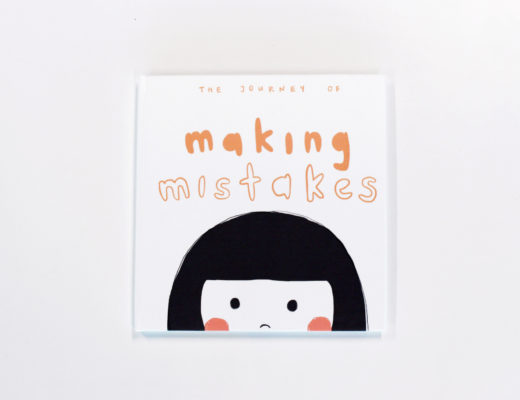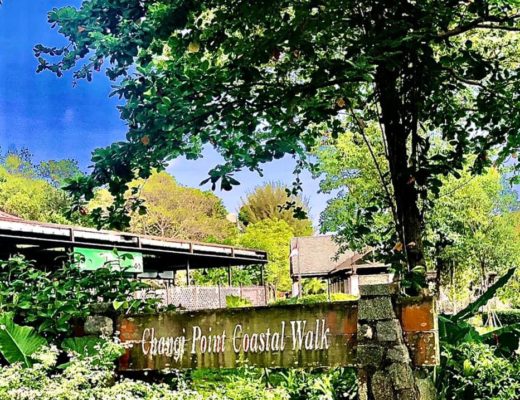Hotel Gahn in Phang-Na designed by Studio Locomotive is inspired by the Baba-Nyonya (the descendants from the inter-ethnic marriage of the Chinese settlers and native inhabitants of Malay Peninsula and Indonesian Archipelago) culture, also known as the Peranakan culture in Singapore and Malaysia. The property owner’s mother provided useful references to the Baba-Nyonya culture in the form of floral laced blouses, batik sarongs, beaded slippers, and fine antique gold jewellery, her home cooking from the family’s recipe book, and her reminiscences of the ways of living in her hometown.
The 1,080m² hotel’s design is strongly influenced by the family’s ancestry with the mother of the property owner tracing her ancestry to her grandfather, who was a young coolie with a cooking talent. After migrating from China during a prosperous time of tin mining for metal plating and tinware industry. The tin rush had caused the unique trans-cultural hybridisation through the migration route from China to the Malay Peninsula, the tin trading voyage from Europe, and the intermarriage of Chinese miners which led to the establishment of the Baba-Nyonya community in Takua Pa.
“Our design intention is to offer guests a time and place to naturally absorb the sense of Takua Pa’s Baba-Nyonya lifestyle from the spatial experience touchpoints suggested in the space programming, choices of materials, material treatments, and the use of traditional construction details,” explains the design team led by architect Thanart Chanyu.
“On arrival this five-storey hotel is outstanding from the steel gateway, modified from the continuous shop-house verandah Ngo-Ka-Ki, a signature architectural feature commonly found in front of local shophouses, to preserve the privacy from road activities and the extensive wood façade, covering pipelines running out of the building to optimise ceiling height, stained in opaque black from engine oil wood treatment.
The hotel reception, coffee bar, and restaurant share the common floor complemented with eclectic forms of Asian-style timber furniture to offer a casual communal setting. The matriarch’s vintage collectibles displayed in lit-up full-height cabinets warmly narrating household stories.
Tall cabinets along the restaurant walls exhibit traditional eatery and cooking equipment complementing gastronomic sensation escaping from the adjoining main kitchen. Ochre red and green coloured paints, noticeable on local architectural ornamental features, are applied on selected walls, pillar, and accented ceiling frames which are also the pipe and wire tracks in disguise.
The dog-legged hardwood staircase leading to guestroom floors demonstrates local undemanding details with the top of the newel post cut in a hexagonal shape and simple rectangle bars for railing and balusters. ‘Fa Lai’, a unique type of window opening, is a pairing of wall gaps and a sliding batten panel considered as a part of the façade when closed.
Each guestroom features the use of traditional materials, local construction technicality, and daily household objects: terrazzo floor with brass strips, wooden wall with beading, vertical iron grille on closet door, bathroom door with wooden latch and doorknob, Chinese canopy bed, and hand-painted ceramic washbasin.
Photos: Beersingnoi ArchPhoto
You might also like:
PHTAA designs a white wedding venue in Thailand accentuated by arches and curved lines
Creative Crews discusses its award-winning classroom makeover for blind children in Thailand
Creative Crews discusses its award-winning classroom makeover for blind children in Thailand

